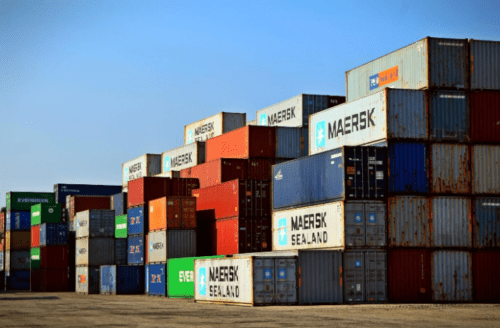Order Fulfillment: Meaning, Process, and How To Optimize

The process of order fulfillment can be complex and time-consuming. However, it can be optimized with the right strategies and ultimately improve customer satisfaction, increase repeat business, and reduce costs.
Order fulfillment is a crucial part of the overall sales process. The process of order fulfillment can be complex and time-consuming. However, it can be optimized with the right strategies and ultimately improve customer satisfaction, increase repeat business, and reduce costs.
Let’s review the meaning, process, and ways to optimize order fulfillment for your business.
What Is Order Fulfillment?
Order fulfillment refers to receiving and processing customer orders, packaging and shipping products, and providing tracking information. It is a critical component of the sales process and is vital in ensuring that customers receive their orders promptly and accurately.
The process typically begins when a customer places an order, whether online or in-store, and includes several steps, such as picking, packing, and shipping the products to customers or other locations for pickup, like retail stores.
The order fulfillment process also includes updating inventory, communicating with providers that will transport your products, and handling returns or refunds. The ultimate goal of order fulfillment is to keep customers satisfied by handling their orders accurately, quickly, and efficiently.
Why Order Fulfillment Is Important
Order fulfillment directly impacts customer satisfaction. A well-executed order fulfillment process can increase customer satisfaction, drive repeat business, and stimulate growth through positive word-of-mouth marketing.
On the other hand, a poorly executed order fulfillment process can lead to delayed deliveries, lost or damaged products, and angry customers. All of these can hurt a company’s reputation and lead to a loss of business.
Additionally, order fulfillment can significantly impact a company’s bottom line. An efficient order fulfillment process can reduce labor, inventory management, and shipping costs. It can also support faster turnaround times, which can help increase sales and revenue.
Properly managing inventory and keeping track of stock levels through the order fulfillment process is also crucial for the fulfillment company’s financial stability.
Furthermore, with the rise of e-commerce, the pressure on companies to ensure the timely delivery of products is even more prevalent.
Effective order fulfillment providers establish trust and loyalty between the customer and the company. As a result, it positively impacts customer retention and brand loyalty to the company.
Order Fulfillment Process

Receiving, processing, and delivering customer orders are all parts of the order fulfillment process. Depending on a company’s unique requirements, the procedure may vary. However, these are among the most common steps in the process.
Receiving
The first step of order fulfillment is capturing customer information including shipping and billing addresses, payment details, and special requests. This information is recorded in a manual or automated system to process and fulfill the order. This step is intended to ensure the accuracy of the order and customer information.
Storage
The next step in order fulfillment is storage. This step is when ordered items are temporarily staged in a warehouse or storage facility on shelves, racks, or other storage systems for easy picking and packing. It ensures that items are safe, secure, and in good condition and that inventory levels are accurate.
Storage conditions and equipment are crucial to keep products in good condition. Optimizing storage space allows for better inventory and accurate stock management, preventing stockouts.
Order Processing
Order processing involves preparing and organizing the necessary information and materials to fulfill the customer’s order. It includes retrieving items from storage, preparing documentation, and preparing products for shipping.
This step ensures the right products are shipped to the right customer at the right time, after making sure that any necessary preparation or customizations have been handled prior to shipping.
Picking
Picking is the step in order fulfillment in which items are physically selected and pulled from storage to fulfill a customer’s order. It is crucial that the right products get to the customer. A mistake at this stage in the process could result in a delay or an incorrect order.
Packing
Packing involves placing selected items into boxes or bags and preparing them for shipping. Packing must be done adequately to ensure products are well-protected during transit, reducing damage and returns, and saving the company money. It also helps meet shipping requirements such as weight or size limits.
Shipping
Shipping is transporting packaged items from the warehouse to the customer. It includes arranging a courier and creating a shipping label with the recipient’s address and tracking number in case of issues or delays. Shipping should ensure that products are delivered promptly and efficiently.
Delivering
Delivering is the final step in the order fulfillment process, in which the courier delivers the package physically to the customer. It is crucial as it is the point at which the customer receives the product. A delay or damage can lead to a negative customer experience, decreasing satisfaction, and resulting in lost business.
Return Process
The return process allows customers to return products that do not meet their expectations. Consumers expect a returns process to be easy and seamless. If the returns process is difficult or frustrating, customers may choose another provider, impacting the company’s business levels, profitability, and reputation.
Improving the Order Fulfillment Process
Improving the order fulfillment process is essential for any business that wants to increase customer satisfaction, improve efficiency, and reduce costs. Here are some ways a company can optimize its order fulfillment process.
Optimize Inventory Management
Accurate and up-to-date inventory information ensures there are products to fulfill customer orders and prevents stockouts. Inventory management predicts demand, adjusts production or purchasing, reduces waste, and lowers costs. Accurate inventory management predictions can also determine the resources needed to fulfill customer orders.
Additionally, with the right tools and strategies, inventory management can enable forecasting to anticipate demand and ensure the right amount of stock.
Double-Check Before Shipping
Double-checking orders before shipping is a key step impacting customer satisfaction. It reduces the risk of sending the wrong item or shipping it to the incorrect address, both factors that can impact customer loyalty.
Additionally, double-checking orders reduces the risk of damage during transit, another factor that negatively impacts the customer experience.
ERP System
An ERP (Enterprise Resource Planning) system is a type of software that can help a company manage and automate its core business processes, including order fulfillment. It provides a unified view of a company’s operations by integrating all the different systems and data sources that a company uses.
An ERP system streamlines inventory management, accounting, and logistics processes by providing real-time inventory levels and order status visibility. It also helps automate the process of tracking and updating the status of orders, keeping the company and customer informed about the fulfillment process.
Backup Strategy
A backup strategy is an integral part of a company’s operations. It ensures the protection of critical data and systems in case of unexpected failures or disasters. It helps ensure order management and inventory tracking systems are always available, even during a hardware failure or outage.
Additionally, it could save companies from legal issues if there are data breaches, especially for companies that rely heavily on electronic systems for order management.
Clear Customer Expectations
Managing customer expectations involves communicating delivery time frames, product availability, and return policy. Maintaining transparency and accountability by providing customers with accurate updates on the status of their orders can help build trust and prevent misunderstandings.
Better Communication with Clients
Effective communication with customers helps to ensure that orders are processed correctly and that customers are satisfied with their purchases. Companies can achieve this by providing accurate product availability, delivery times, and tracking information.
Open lines of communication allow for efficient resolution of issues, minimizing the risk of dissatisfaction and negative reviews.
Automate
Automation streamlines tasks and processes like inventory management, order processing, shipping, and customer communications. It reduces manual labor, improves accuracy, speeds delivery times, and provides valuable analytics. There are many types of automation that can be used to improve the order fulfillment process, so it is important to choose the one that best fits your company’s needs.
Competent Return Service
A good return service is essential for maintaining customer satisfaction and loyalty. It should be easy to understand and use, minimize customer inconvenience, and process refunds or exchanges promptly.
Invest in Software
Specialized software can streamline inventory management, order processing, shipping, and customer communications. Inventory management software can help track inventory levels and predict demand, while shipping and logistics software can help optimize shipping routes and track packages.
Use Data To Make More Informed Decisions
Data can provide valuable insights into customer demand, inventory levels, production schedules, and shipping trends. This information can help companies make more informed predictions, identify inefficiencies, and optimize processes.
Order Fulfillment Options

Order fulfillment can be executed differently, depending on the company’s needs and resources. Some of the common options include:
Merchant
Merchant order fulfillment is a type of order fulfillment option in which the company acts as both the retailer and the supplier of the products. The company owns the inventory and handles receiving, storing, processing, picking, packing, and shipping orders.
Merchant order fulfillment provides a high degree of control over the inventory and the order fulfillment process. Companies can therefore ensure that they have the products on hand to fulfill customer orders and respond quickly to changes in customer demand.
Dropshipping
In dropshipping, companies outsource order fulfillment. The storage and shipping of products belongs to a third-party supplier or manufacturer and customers usually shop online in an e-commerce store.
The supplier or manufacturer will ship the products directly to the customer without the company having to hold any inventory.
Dropshipping allows companies to reduce storage and inventory management costs, and reduce the risk of unsold products. It also allows companies to get products to market faster because they don’t need to invest in inventory before they start selling.
Third-Party Logistics
Third-Party Logistics (3PL) is an order fulfillment option in which a company hires a third-party logistics provider to handle all aspects of the order fulfillment processes on its behalf. 3PL providers are companies that specialize in logistics and supply chain management.
3PL providers offer a wide range of services, including warehousing, inventory management, and transportation, all of which can optimize a company’s order fulfillment process.
In-House
In-house order fulfillment is an option in which the company handles all aspects of the order fulfillment process. By managing the order fulfillment process in-house, companies can better manage the quality of their products and the customer experience.
Handling inventory in-house can provide real-time visibility and control over the entire order fulfillment process. Companies can therefore identify issues, make quick decisions to prevent service failures, and improve the overall process.
Hybrid
Hybrid order fulfillment is a combination of in-house and dropshipping. The company handles some aspects of the order fulfillment process in-house while outsourcing others to third-party suppliers or manufacturers. This approach allows companies to take advantage of the benefits of both in-house and dropshipping order fulfillment options while minimizing risks.
Challenges
Order fulfillment can be complex and challenging, requiring coordination and communication across different tasks, processes, and departments.
Here are some of the main obstacles when it comes to order fulfillment.
Inventory Management
Inventory management accurately tracks inventory levels, predicts demand, and generates purchase orders. Maintaining the correct inventory levels without overstocking and incurring unnecessary storage costs is critical.
Forecasting demand accurately can be difficult. If a company underestimates demand, it can result in stockouts and lost sales. On the other hand, if a company overestimates demand, it can result in overstocking leading to higher storage costs.
Supply Chain Issues
Supply chain issues can make it difficult for companies to plan and manage the flow of goods and materials. These issues can arise due to supplier delays, transportation disruptions, customs clearance problems, and other logistical challenges.
Seasonality
Seasonality creates a fluctuation in demand that can be difficult to predict and manage. For example, many companies experience a spike in demand for certain products during the holiday season, while demand may be slower in other seasons.
Seasonality makes it difficult for companies to maintain the correct inventory levels and can lead to stockouts and delays.
International Shipping
International shipping involves navigating a complex web of regulations, customs, and logistics processes. Companies that ship internationally must comply with various rules and laws, including tariffs, taxes, and trade agreements.
International shipping can create unpredictability and uncertainty in the order fulfillment process. For example, customs clearance can be time-consuming and lead to delays in fulfilling customer orders. There can be delays due to congestion at ports, which also result in products not moving as planned.
Additionally, tariffs and taxes can add to the overall shipping cost, making it more expensive for the company and the customer.
Correcting Mistakes
Mistakes can occur at any stage of the order fulfillment process, from receiving and processing orders to picking and packing to shipping and delivery. Human error, system failures, or other operational issues can cause these mistakes.
Correcting mistakes can be time-consuming and resource-intensive. For example, if an order goes to the wrong address, the company may need to reship the order to the correct address, leading to additional costs and further delays.
Customer Demand
Customer demand planning can be challenging. Unforeseen changes in demand, such as spikes in sales or sudden increases in the popularity of a particular product, can strain resources and logistics. As a result, companies could suffer stockouts, delays, and other issues.
How To Choose the Best Order Fulfillment Service
When choosing an order fulfillment service, there are several vital aspects to consider.
Here are some factors that can be helpful in the process of evaluating options
Business Size
The size of a business can impact the cost and logistics of fulfilling orders. Smaller companies may find it more cost-effective to use a third-party fulfillment service, while larger companies may have the resources to handle fulfillment in-house.
Location
Location impacts the cost and speed of fulfilling orders. For businesses with customers located nearby, handling fulfillment in-house or through a local fulfillment center may be more cost-effective and efficient.
On the other hand, businesses with customers in different countries may benefit from a third-party fulfillment service with multiple fulfillment centers in different regions.
Customization
The degree of customization offered by a company directly impacts the potential for errors in order fulfillment based on the increased variables that must be reviewed when processing each order.
Technology Integrations
Technology integrations have a significant impact on the efficiency and scalability of the fulfillment process. Businesses that have integrated their e-commerce platform can benefit from an automated and streamlined fulfillment process.
Businesses not using technology integrations may experience higher error rates and longer turnaround times because every aspect of order fulfillment is manual.
Sales Channels
Businesses that sell through multiple channels may need to use a third-party fulfillment service that handles each channel’s logistics and requirements.
Companies that sell their products only through their e-commerce website can handle fulfillment in-house or through a nearby fulfillment center.
FAQs
Here are some commonly asked questions about the order fulfillment process.
What is the order fulfillment rate?
The order fulfillment rate measures the percentage of orders successfully fulfilled and delivered to customers. You can calculate this rate by dividing the number of orders fulfilled by the total number of orders received.
How to start an order fulfillment business?
Develop a business plan that outlines your target market, services offered, costs, and projected revenue. Secure a facility, warehouse, or storage space, purchase necessary equipment and software, and hire staff
You will also need to establish relationships with suppliers, shipping companies, and other partners to ensure that you have the resources and infrastructure to fulfill orders.
What does it mean when an order is fulfilled?
An order “in fulfillment” is being processed and prepared for shipment. Upon delivery to the customer, an order is fulfilled.
How do you increase order fulfillment accuracy?
The first step to improve order accuracy is to improve your inventory management. It is also important to review the picking and packing processes, incentivize employees for accurate orders, and track orders.
